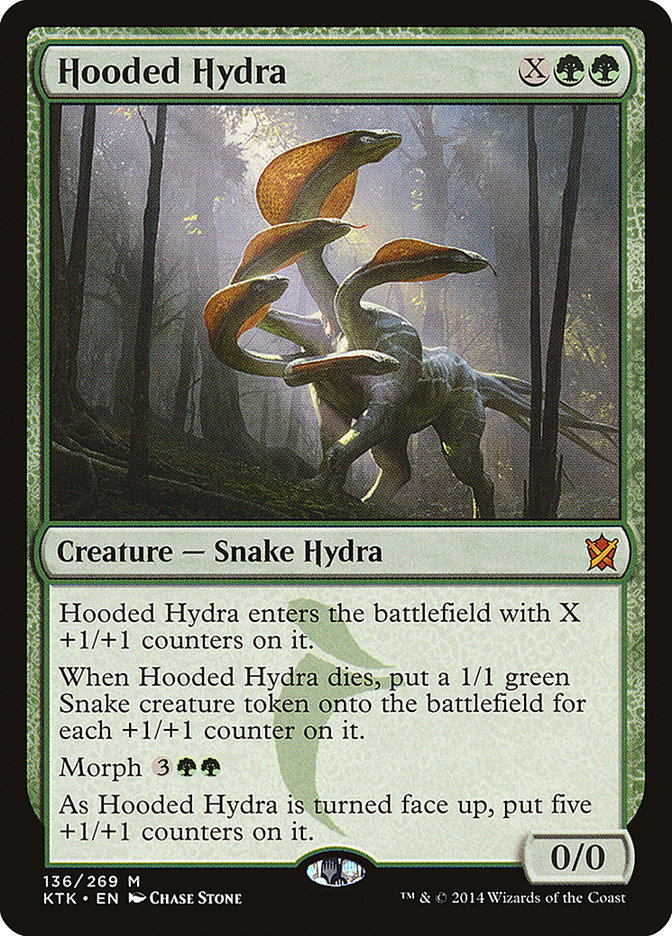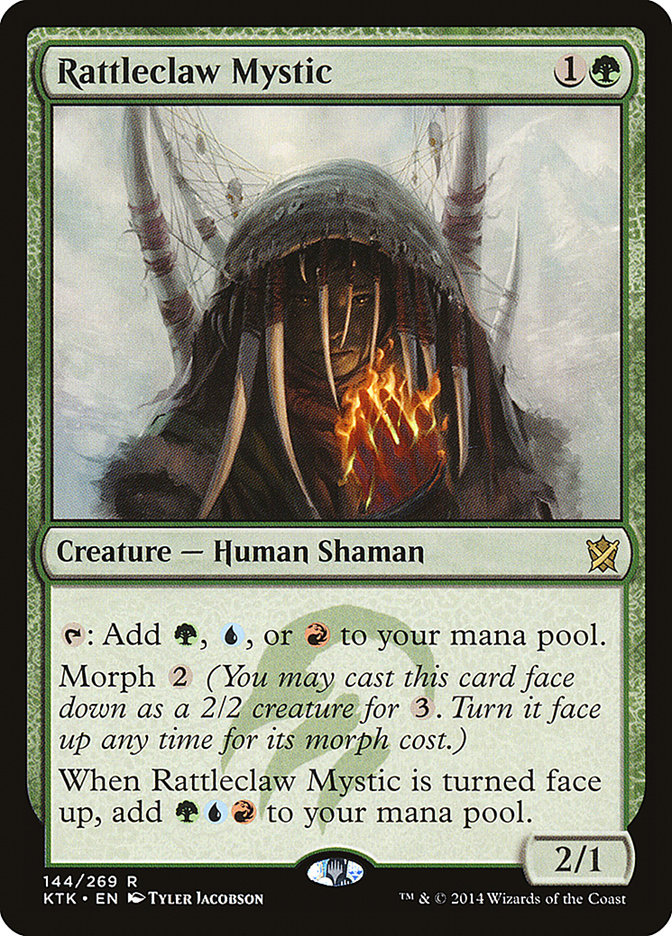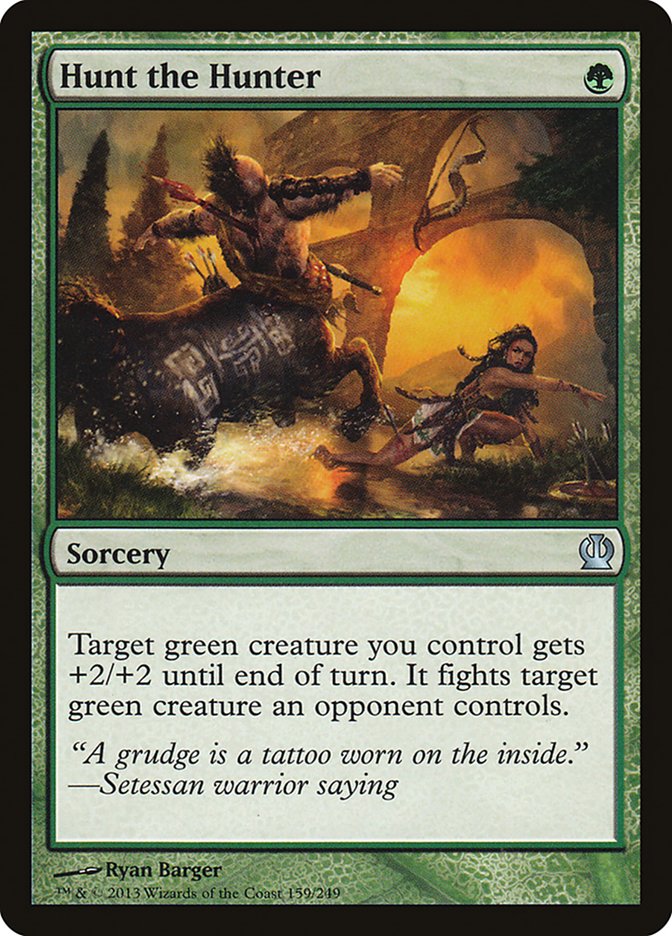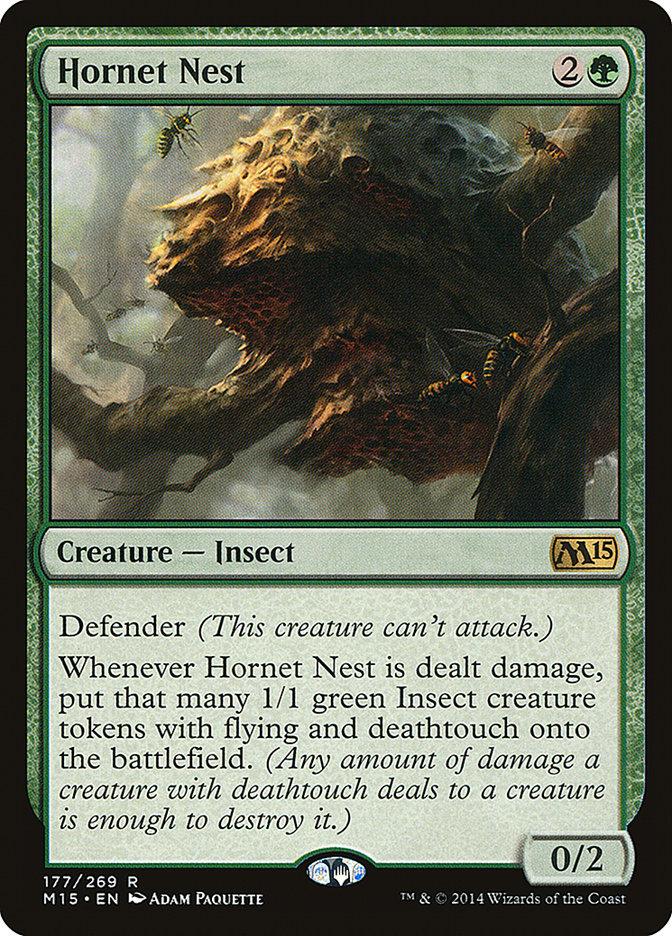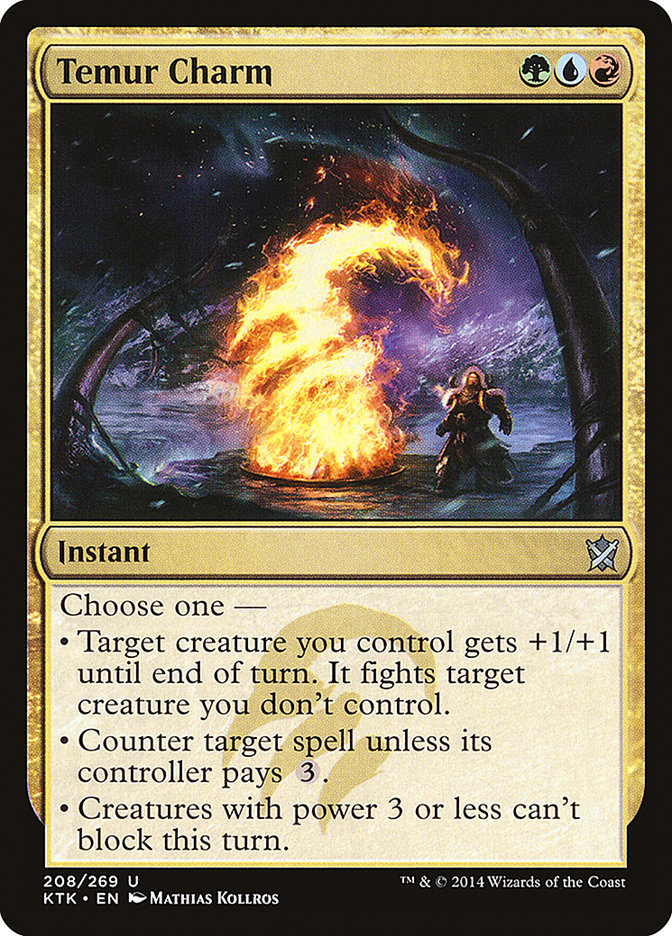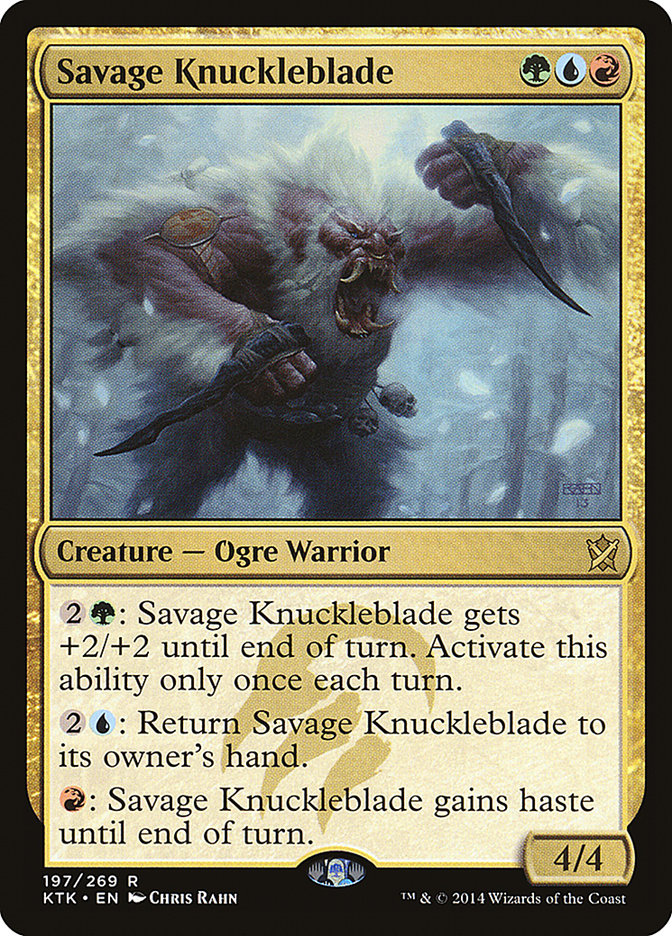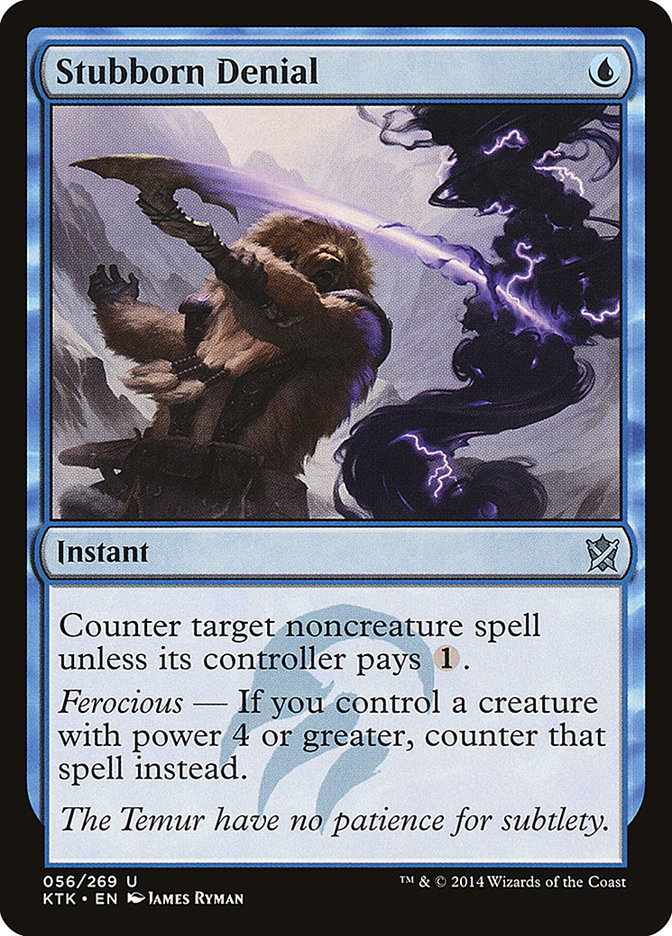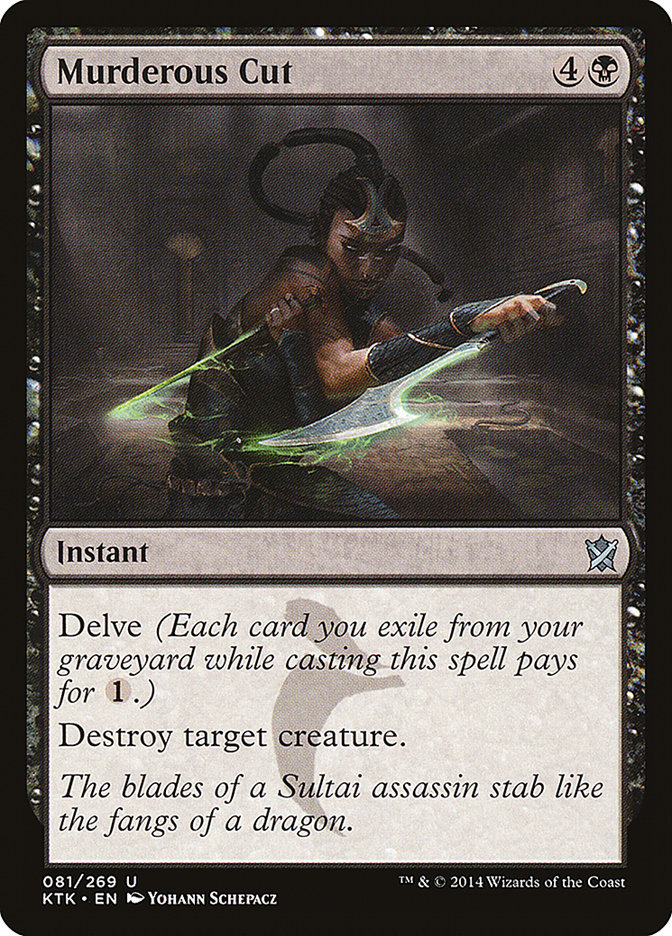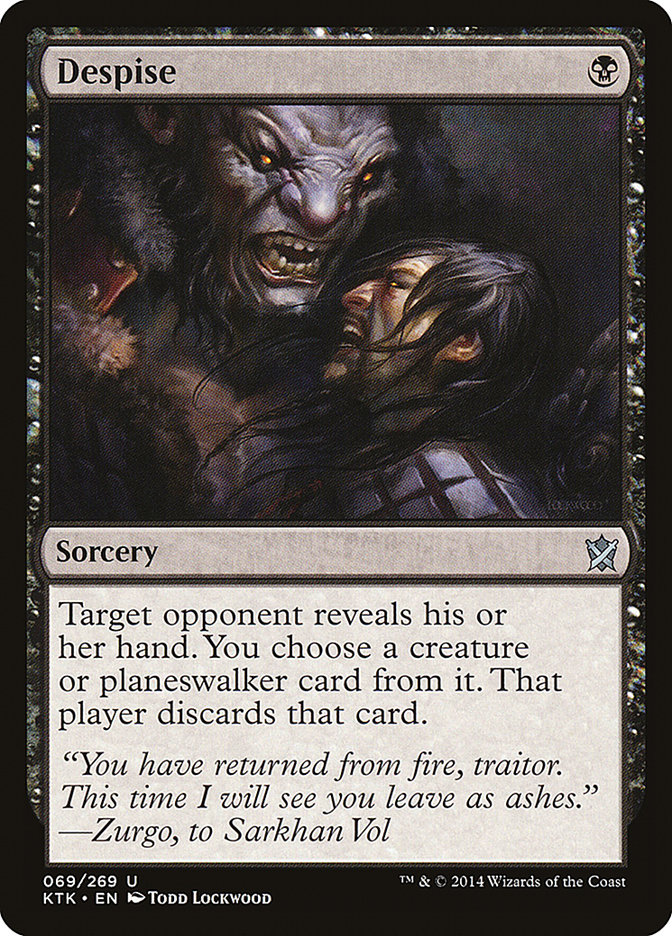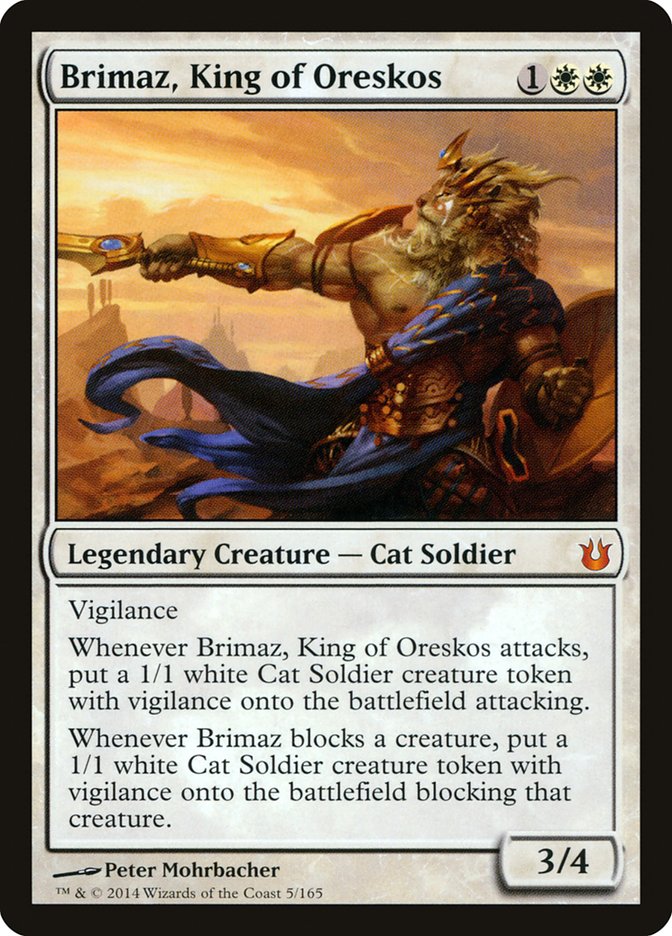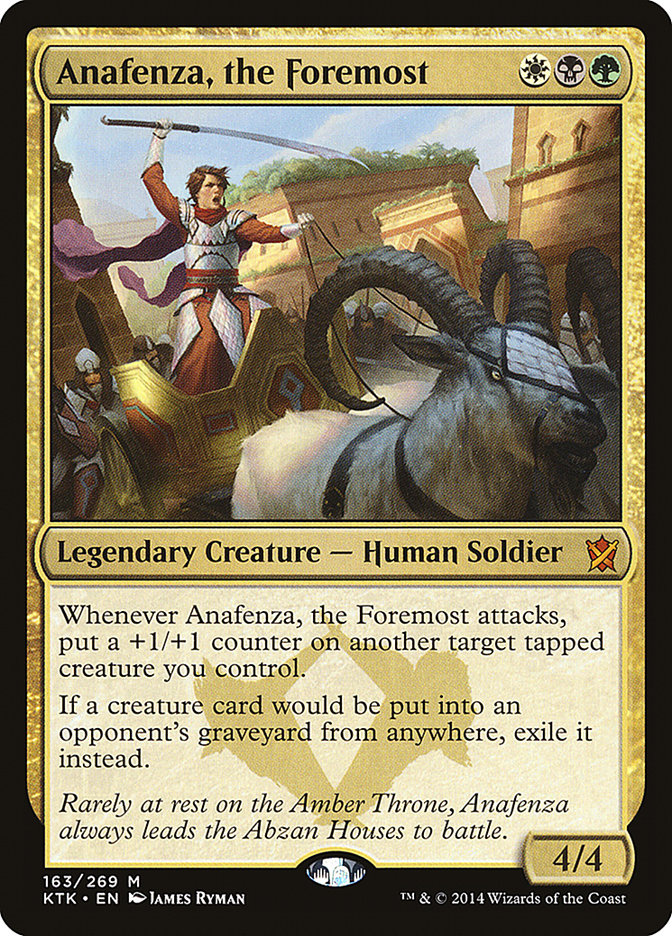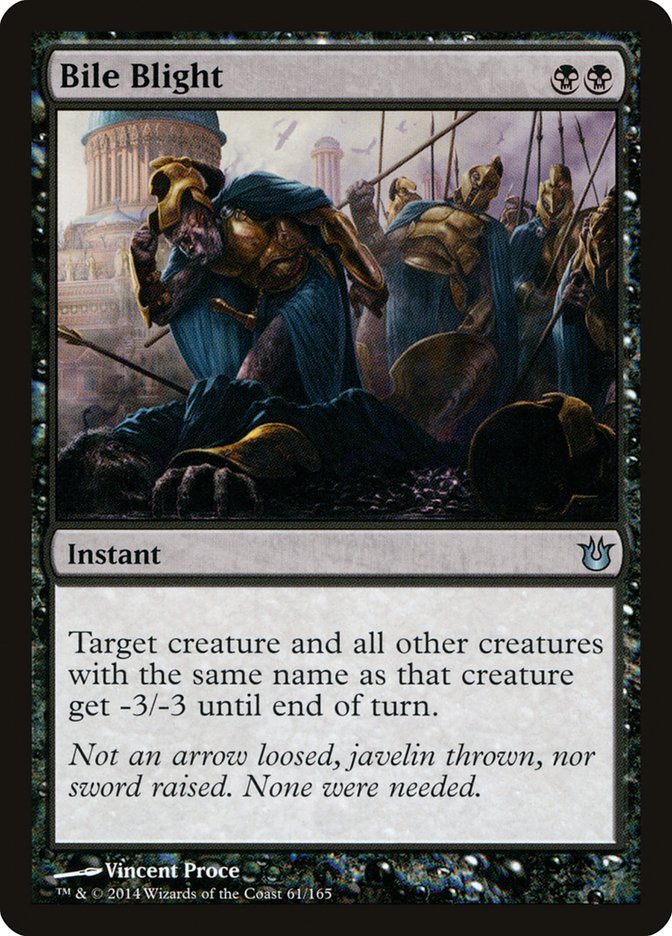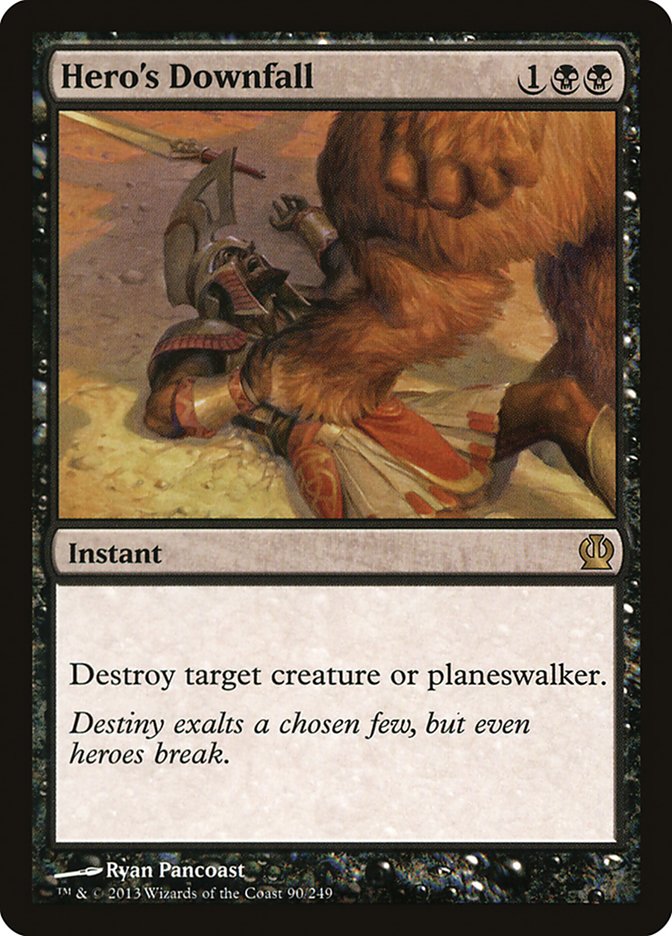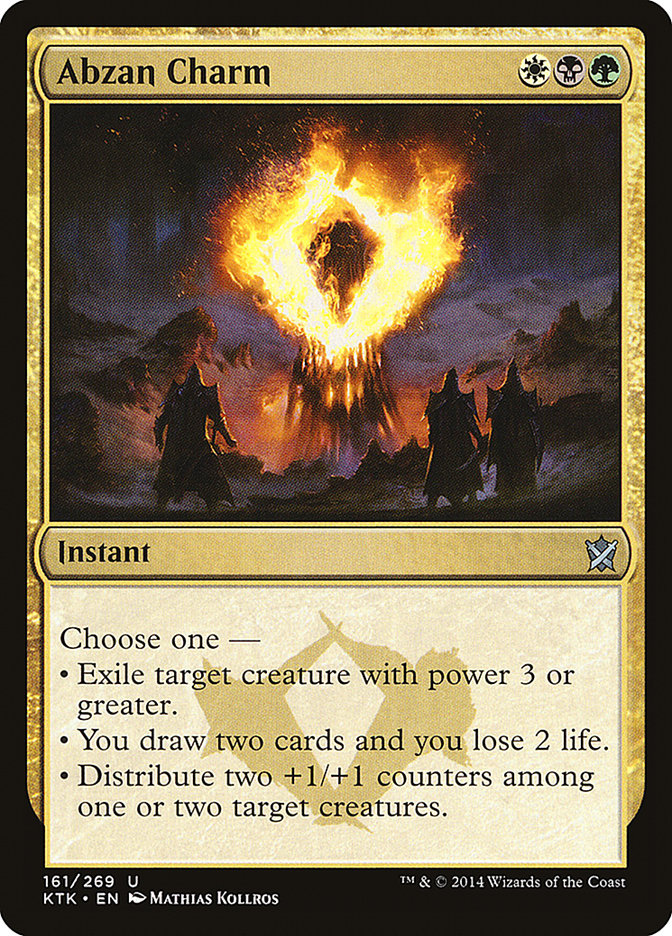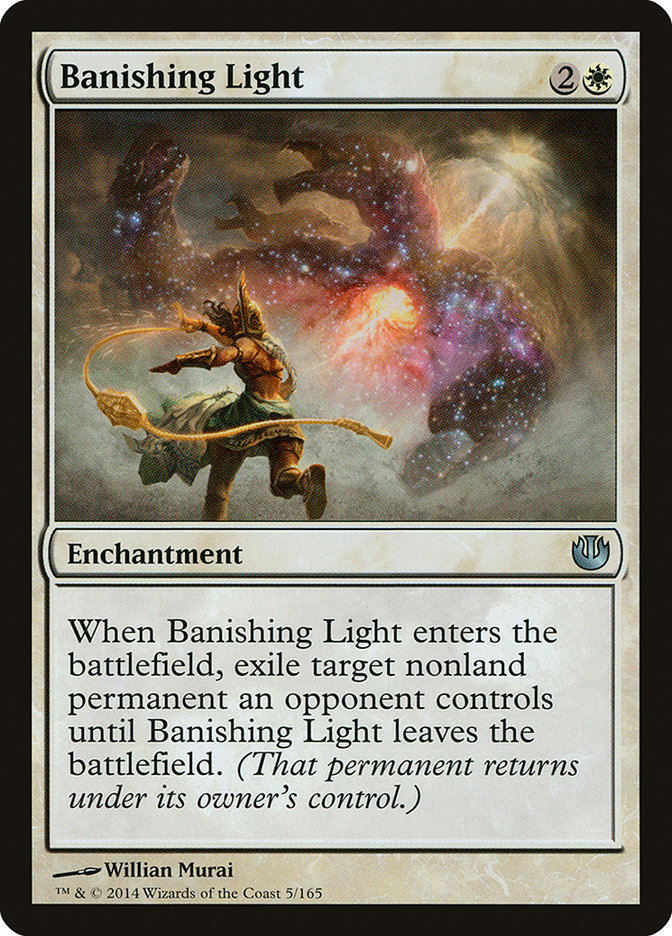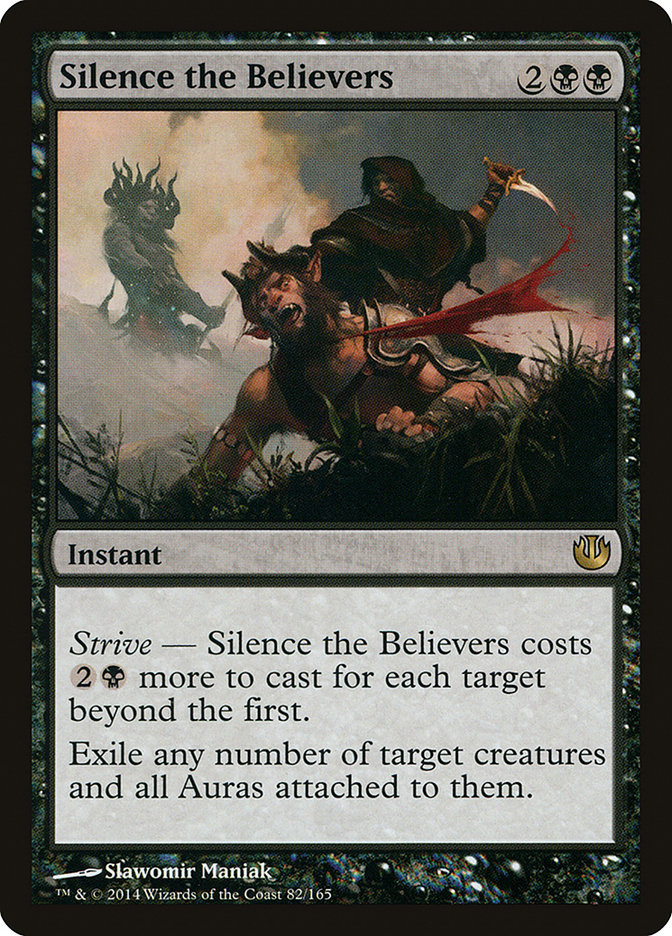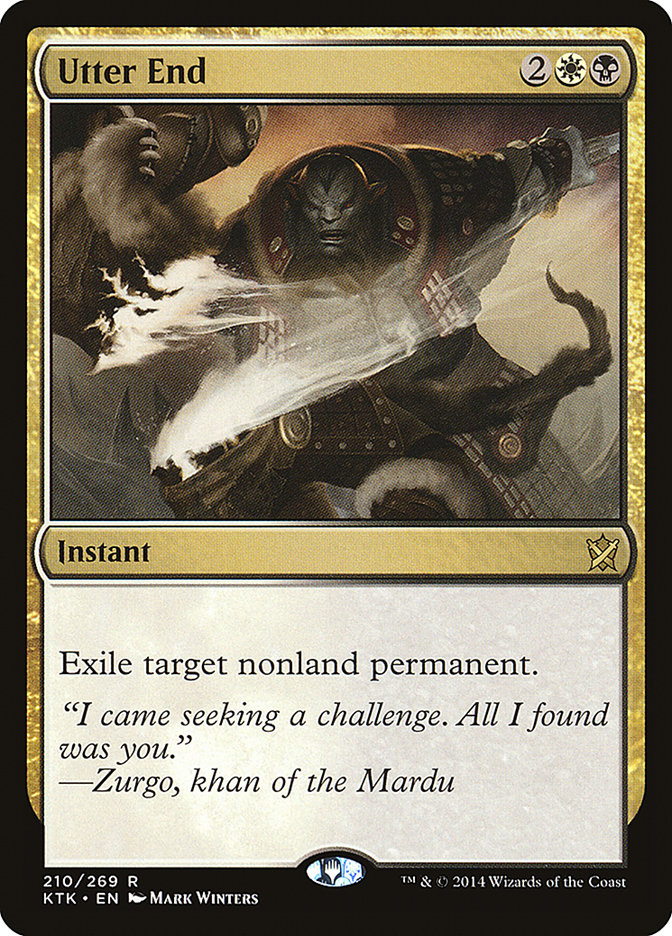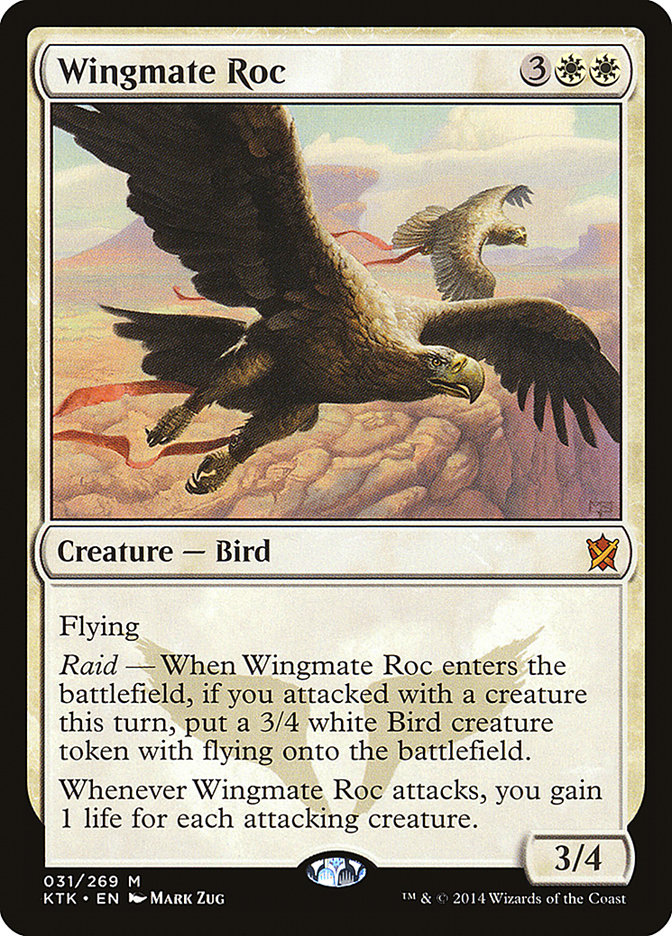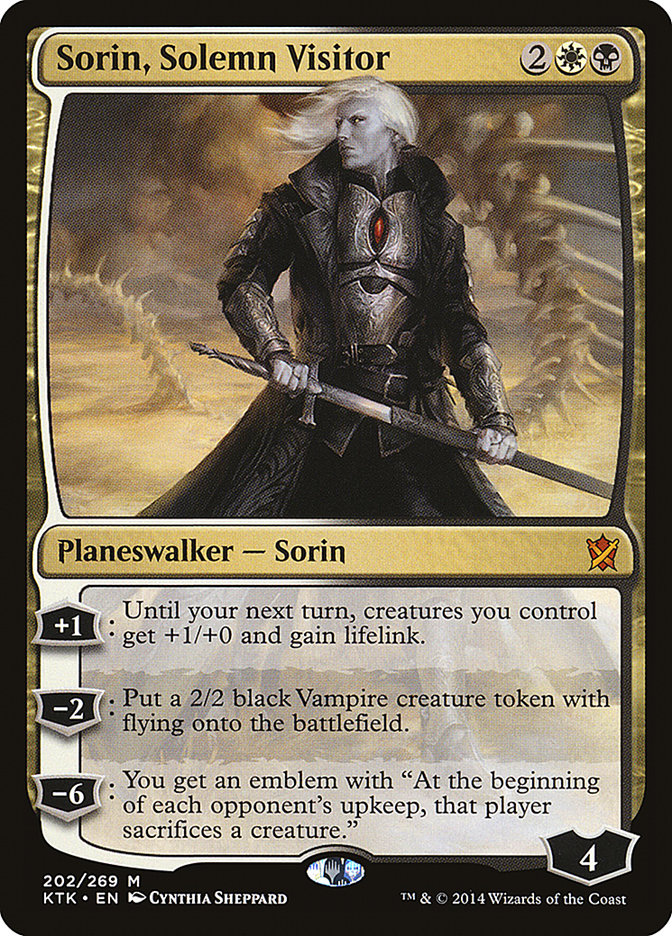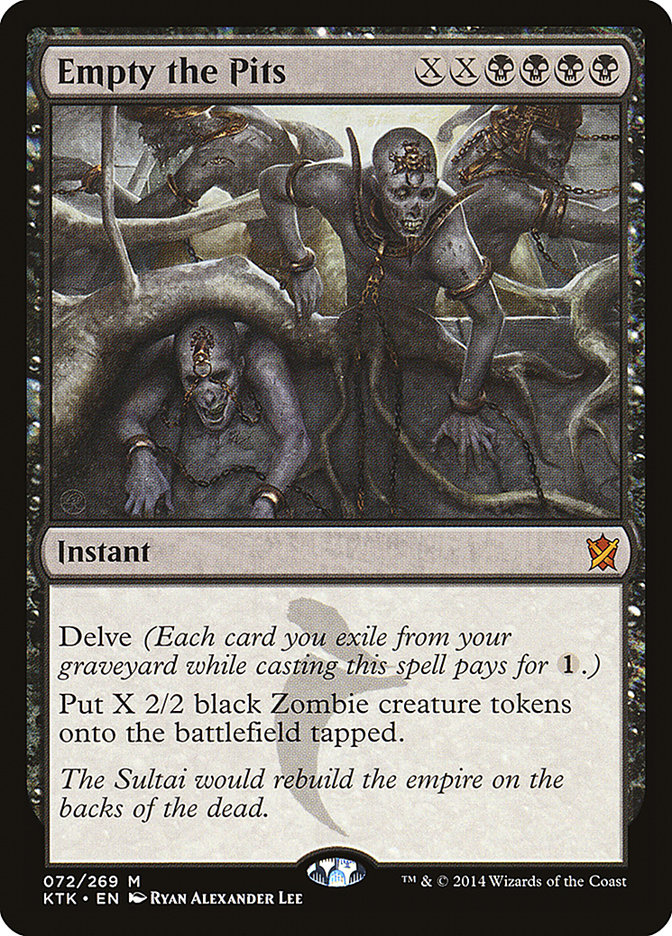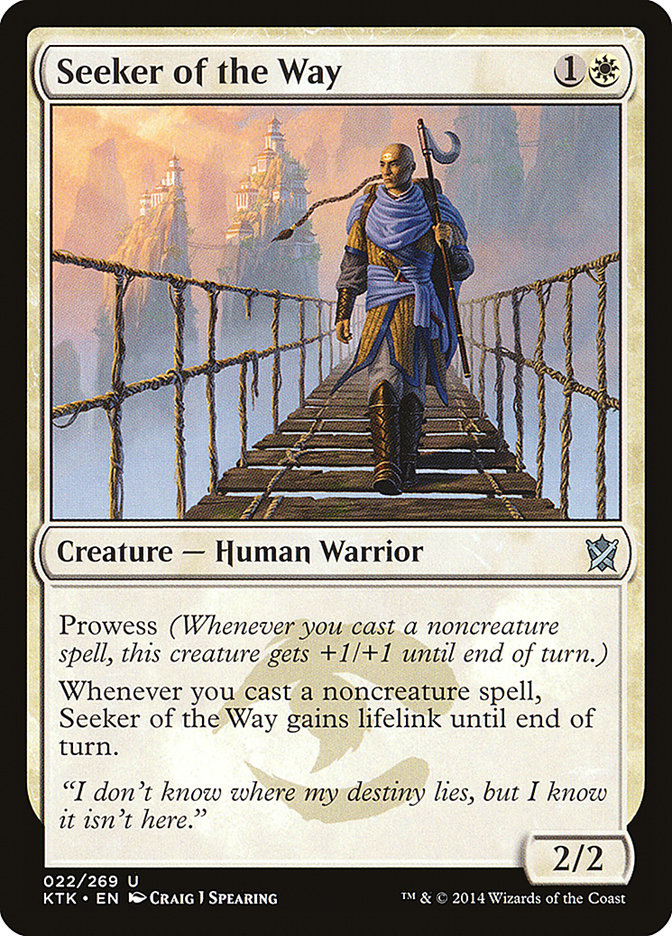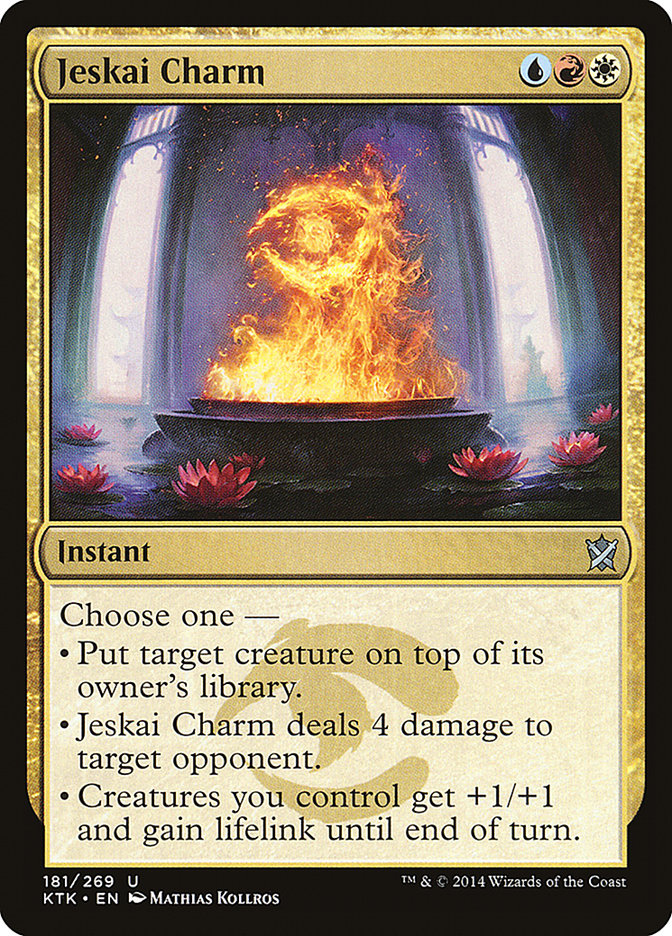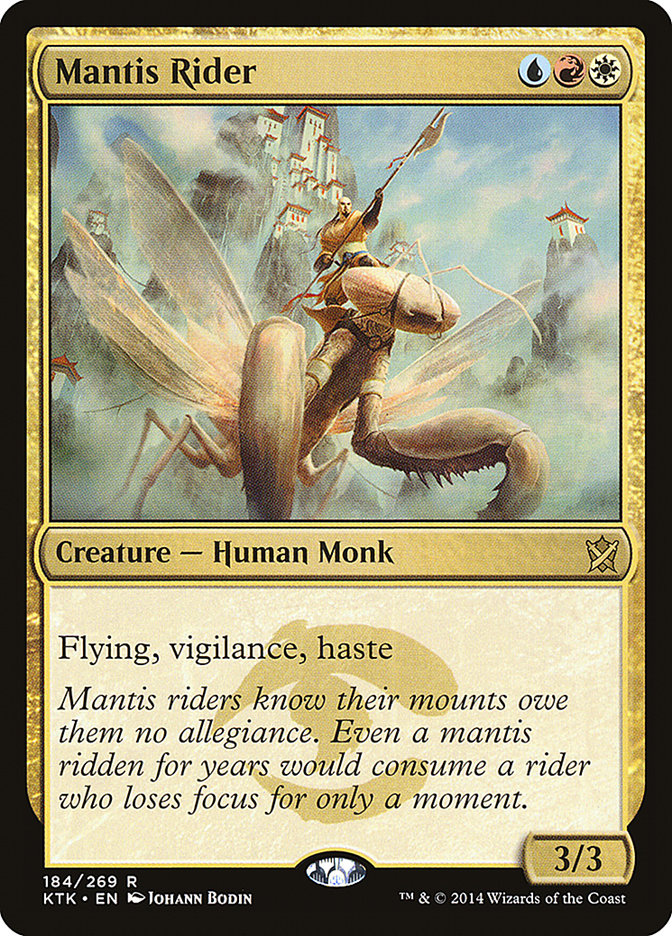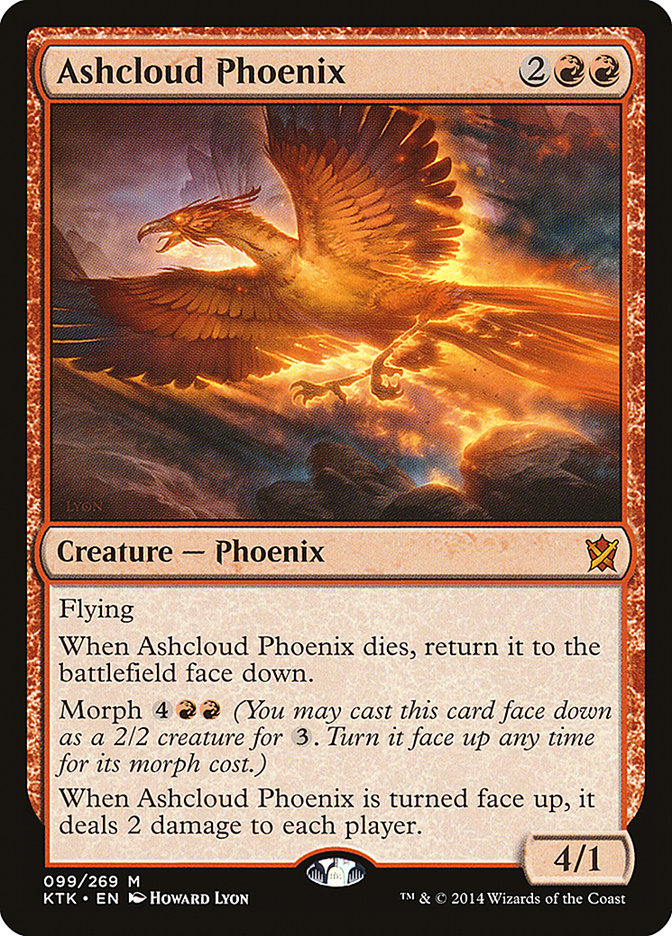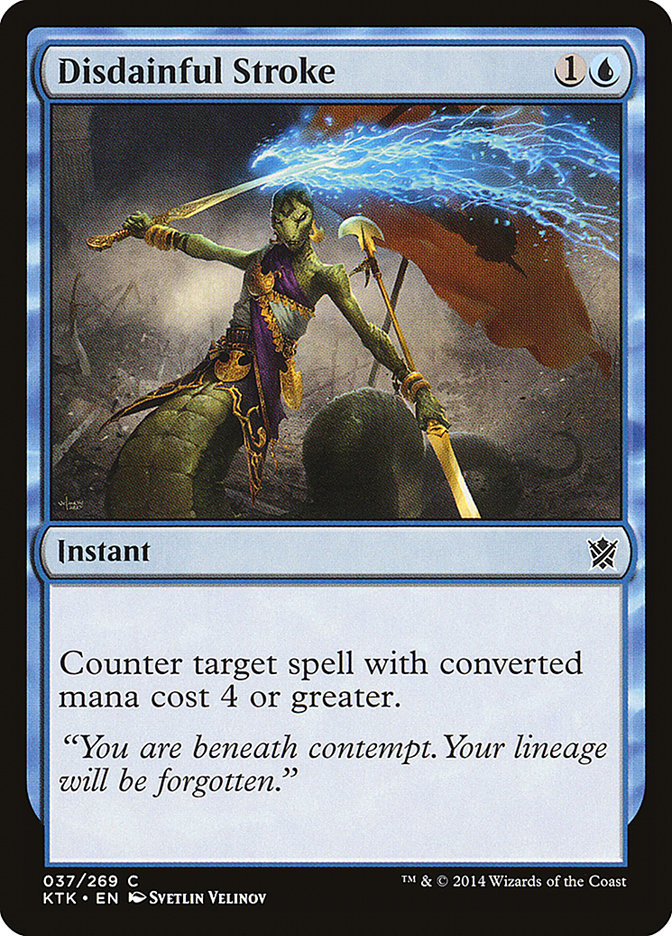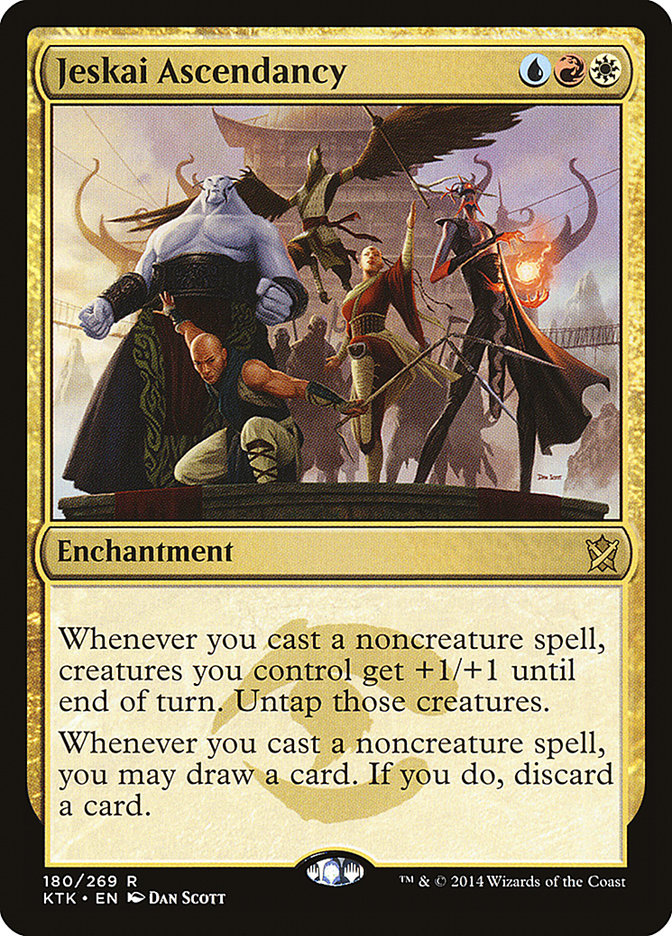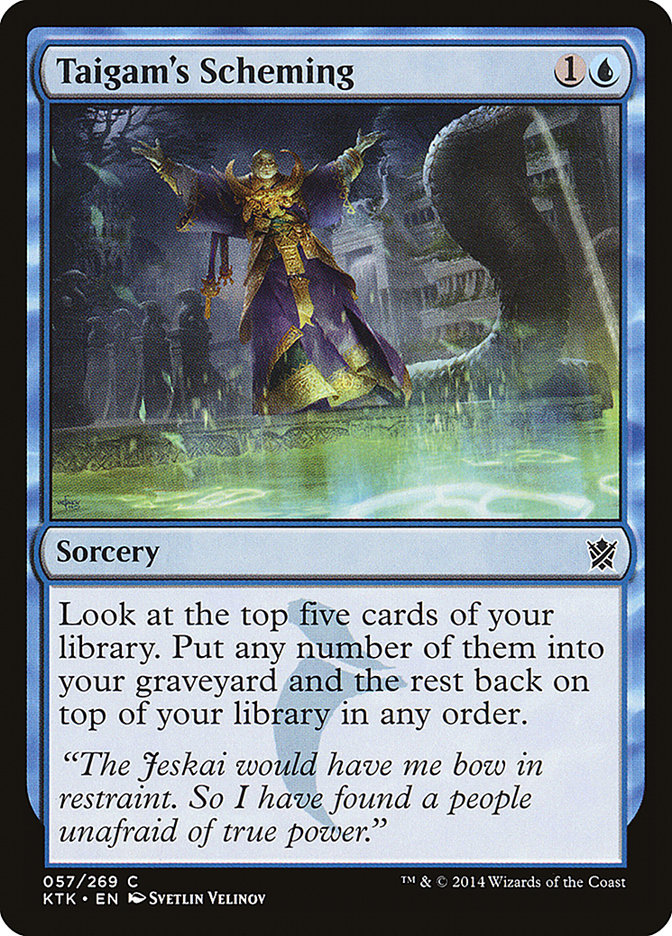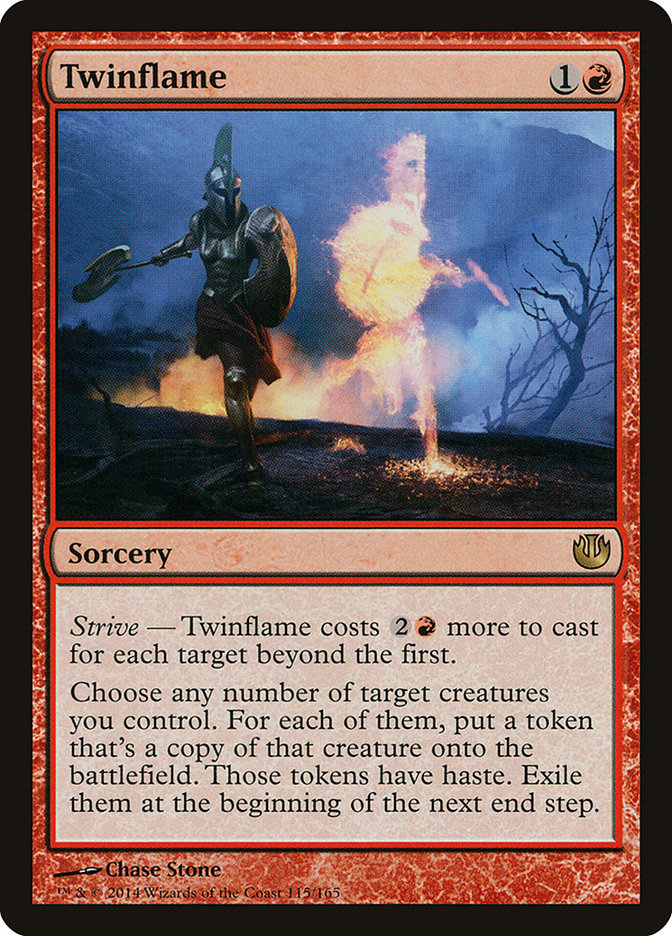Well, that didn’t take long.
Khans of Tarkir has been legal for a single weekend, and already we are knee-deep in a format with a very different texture than any we’ve experienced in
long time (if ever). It’s a format defined by green mana-ramping. It’s a format featuring multiple crazy new combo decks. It’s a format completely devoid
of control. In fact, it’s nearly devoid of aggro or tempo too.
Of the 64 decks to finish in the top 32 of SCG NJ and SCG Indy, midrange was literally 88.8% of the field!
I’ve never seen anything like this. It’s the midrange-iest format to ever midrange a mid-midrange-range. Yeah, part of it is that Courser of Kruphix really
is as busted as everyone has been saying, given its interactions with fetchlands. It’s not an accident that over 70% of the winner’s circle metagame was
Courser of Kruphix decks.
As a reminder, the winner’s circle metagame is a concept first advanced by Hall of Famer Frank Karsten that weighs the top finishing decks by finish. The
metagame picture isn’t the round one metagame, but it is the metagame you’ve got to beat if you want to win the tournament. It’s far more useful than
focusing on all the random decks that aren’t making it out of the first few rounds.
There were two SCG Opens this weekend, setting the pace for the format to come. Here are the results from the top 32s of each:
|
Archetype |
Metagame Percentage |
|
G/x Devotion |
28.0% |
|
G/R/x Ramp |
26.4% |
|
Abzan Midrange |
15.2% |
|
Jeskai Tempo |
9.6% |
|
W/x Midrange* |
8.0% |
|
Misc Aggro** |
6.4% |
|
Ascendancy Combo |
2.4% |
|
Misc Abzan*** |
2.4% |
|
Sultai Delve |
1.6% |
*W/R Midrange, W/B Midrange, and Mardu Midrange
**Mono-Black Aggro, B/w Aggro, Mono-Red Aggro, Naya Aggro, Mardu Aggro, Mardu Tokens
***Constellations and Reanimator
While this is only nine marco-archetypes, we actually saw incredible diversity among the different varieties of each archetype. Additionally, there are
some pretty generous mergings going on here, such as merging all aggro decks. When only 6.4% of the field plays aggro, that starts to make more sense, even
though some aggro decks are base black (like the Theros Block decks), while others are base red.
The two most popular decks at the top are actually mostly the same deck. Really, the biggest difference is that one has Nykthos, Shrine to Nyx. That’s
basically it, and while G/R Ramp is more likely to have more red cards like Crater’s Claws, Stormbreath Dragon, and Sarkhan, the Dragonspeaker, whereas the
Green Devotion decks have more Genesis Hydra, Hooded Hydra, and Hornet Queen, there’s spill over in both directions. They are both just green ramp decks.
That said, there’s actually a lot of variety of each green ramp deck. For instance, here’s a more in-depth breakdown of green devotion decks:
|
Varieties of Green Devotion |
Metagame Percentage |
|
Mono-Green Devotion |
13.6% |
|
G/r Devotion |
10.4% |
|
G/b Devotion |
3.2% |
|
G/u Devotion |
0.8% |
|
Total |
28.0% |
Mono-Green and G/r Devotion are far and away the most popular green devotion decks, but Llanowar Wastes and Yavimaya Coast make other splashes possible. In
theory, people could splash white, and in fact, Windswept Heath is pretty popular. The thing is, the best white card is Elspeth, Sun’s Champion, which
isn’t trivial to splash, particularly when Rattleclaw Mystic doesn’t help.
Here’s a pretty typical example of the mono-green style:
Creatures (33)
- 2 Hornet Queen
- 4 Elvish Mystic
- 4 Polukranos, World Eater
- 1 Nylea, God of the Hunt
- 4 Sylvan Caryatid
- 3 Nylea's Disciple
- 1 Voyaging Satyr
- 4 Courser of Kruphix
- 4 Genesis Hydra
- 4 Rattleclaw Mystic
- 2 Hooded Hydra
Planeswalkers (4)
Lands (10)
Spells (13)
- 13 Forest

Hooded Hydra is a great mana sink for all that Nykthos mana and gives us some much need durability against removal.
As we saw above, control is basically a non-factor, but there are still some Drown in Sorrows and End Hostilities (the Wrath of Khan) in small numbers. For
the most part though, Hooded Hydra is just a real strong threat against people relying on Hero’s Downfalls, and the like. It also happens to make our
Rattleclaw Mystics better, as it makes it really risky for people to fight or kill our morphs. One could turn out to be a Hooded Hydra, and suddenly, we’ve
got an entire army.
Notice this list’s manabase. Half a dozen fetchlands despite being mono-green? That’s right, and it’s great. Courser of Kruphix is just absurd with
fetchlands, giving you the life back that was just about the only cost (two life, in fact, so you’re coming out ahead); plus the fetchland gives you a free
shuffle, which means greater control over your draws.
Rattleclaw Mystic may not be Noble Hiearch, but it doesn’t need to be. There’s a real shortage of good two-drops, and if all you want to do is ramp, it and
Sylvan Caryatid are the two-cost options, with Voyaging Satyr in third place.
With three-quarters of the field playing green, it’s no wonder we’re seeing more and more Hunt the Hunters. You just know it’d bring a tear to Jamie
Wakefield’s eyes, green monsters as far as the eye can see!
While the green devotion decks are largely all the same, the G/R Ramp decks have a bit more diversity in card choice.
|
Varieties of G/R Ramp |
Metagame Percentage |
|
G/R Monsters |
9.6% |
|
Temur Monsters |
6.4% |
|
Naya Planeswalkers |
5.6% |
|
Jund Monsters |
4.8% |
|
Total |
26.4% |
Straight G/R was the most popular, however, each of the other builds has arguments justifying the splashes. After all, the mana-fixing in green decks is
pretty easy and good, and even splashing double white for Elspeth is no trouble if you don’t have Nykthos, since it leaves you more room for non-green
lands like Temple of Triumph and Battlefield Forge.
Here’s a look at the straight G/R build:
Creatures (26)
- 4 Elvish Mystic
- 4 Polukranos, World Eater
- 4 Sylvan Caryatid
- 4 Stormbreath Dragon
- 2 Boon Satyr
- 4 Courser of Kruphix
- 4 Goblin Rabblemaster
Planeswalkers (4)
Lands (8)
Spells (22)

While Goblin Rabblemaster does not appear in all G/R Monster decks, it is in about half of the ones without splashes, often backed up with an above average
amount of burn. Crater’s Claws is totally awesome if you can “kick it” fairly often, but Magma Jet as a second option is card choice that is likely to vary
from week to week.
There are basically only two important creatures in the format with three-toughness: Fleecemane Lion and Mantis Rider. It was clear the Lion would show up
some, but Mantis Rider finding an early home was far from a sure thing. Fleecemane Lion is pretty good against G/R decks, but Mantis Rider can actually be
a very serious problem. It kills Xenagos right away if he did not plus, and it’s a fast aggressive clock that’s hard to block while preventing a bit a
damage here and there from cards like Courser of Kruphix, Rattleclaw Mystic, and Xenagos tokens. It does die to Sarkhan, Dragonspeaker, however, so it is
not without an achilles’ heel.
Boon Satyr is starting to show back up again, and I suspect we’ll see more of that in the weeks to come. It’s one of the best ferocity enablers for three
or less mana, plus it’s a great way to power up Goblin Rabblemaster in combat.
Hornet Nest has emerged as a sideboard staple, providing a huge deterrent to ground-based assaults. Red and green, in particular, have difficulty getting
past it without waking up the bees. White and black have tons of good answers, and I wouldn’t even bother with Hornet Nest against people with access to
either of those colors. Blue has a few answers, but they haven’t been all that popular yet. For instance, take a look at this Temur Monsters list:
Creatures (24)
- 4 Elvish Mystic
- 4 Polukranos, World Eater
- 2 Sylvan Caryatid
- 4 Stormbreath Dragon
- 3 Courser of Kruphix
- 3 Rattleclaw Mystic
- 4 Savage Knuckleblade
Planeswalkers (6)
Lands (15)
Spells (15)

Kiora, the Crashing Wave is a crude sort of answer to Hornet Nest, but it’s better than nothing. Remember, Kiora doesn’t just prevent the damage the target
deals, it also prevents the damage it would take.
Blue is the easiest color to splash in G/R Monsters because of Rattleclaw Mystic giving it to you for free. Which blue cards to use though? Kiora, the
Crashing Wave has proven very popular, particularly without Jace, Architect of Thought to make her look bad. Unfortunately for her though, Mantis Rider
makes the format a lot more hostile for her than she’d like.
Temur Charm has become an early favorite, and in fact, is basically the only Counterspell anyone is playing maindeck. None of the three modes are that
good, but they hit three completely different angles, which is perfect for a charm. The Mana Leak mode is obviously glamorous, but Counterspells aren’t
actually all that good in the format. They are rare enough, however, that a well-timed one can really catch someone off guard.
The fighting ability can help Savage Knuckleblade and Polukranos win green mirrors and take out big creatures in a way Temur usually isn’t very good at.
Finally, the pseudo-Falter is a key weapon against Hornet Queen and Elspeth, which otherwise might brickwall our offense.
See the Unwritten is an exotic choice in Temur Monsters, particularly a build without Sagu Mauler or Hornet Queen. My guess is that it’s more likely to end
up in some kind of a Reanimator or Green Devotion deck. Even with only six “home runs” in your deck, you’re 60% to hit one. Even when you don’t, however,
you’re usually going to get something, plus a lot of potential delve fuel. Where you really come out ahead is when you successfully “kick” the ferocity
ability, sometimes giving you a full-on Tooth and Nail for just six mana. If you’re looking for a way to go even bigger with a green creature deck, keep
this one in mind.
Savage Knuckleblade is a great card in its own right, particularly against non-green decks. Unfortunately, that’s not really the format right now. I
wouldn’t be surprised if its popularity declines a little in the short run, however, I think we’ll see a resurgence around the time of the Pro Tour. The
card has some natural strengths against control and reactive decks, and if Temur moves in a more tempo-based direction, the Knuckleblade could get great
fast.
Stubborn Denial is one of the more underrated Standard cards in Khans of Tarkir. There aren’t really that many Counterspells floating around, nor are there
many ways to make two good plays in the same turn. Coming up with a four-power creature isn’t hard, and the mana you save compared to Negate is huge when
you’re doing things like casting Savage Knuckleblade on turn 3 with an accelerator. Even when you don’t have ferocity, however, you’re still going to hit a
lot of spells with the Force Spike, such as a turn 5 End Hostilities or a turn 6 Elspeth, Sun’s Champion.
Some Temur players have already moved away from Savage Knuckleblade and are playing more Planeswalker-centric strategies, such as Jonah Gaynor’s top 16
list from SCG New Jersey.
Creatures (21)
- 4 Elvish Mystic
- 4 Polukranos, World Eater
- 4 Sylvan Caryatid
- 4 Stormbreath Dragon
- 3 Courser of Kruphix
- 2 Rattleclaw Mystic
Planeswalkers (12)
Lands (16)
Spells (11)
- 4 Forest
- 3 Mountain
- 1 Island
- 3 Temur Charm

Three Courser of Kruphix aside, this list is a pretty good example of the Temur Planeswalkers strategy, and even despite its lower creature count, Temur
Charm shows up in force. My biggest issue with it is the glut at the five spot, with Stormbreath Dragon, Nissa, and Sarkhan adding up to ten five-drops.
That said, Nissa is sort of more of a six-drop, so maybe it’s not that bad.
Anger of the Gods is a particularly important sideboard card here. The lack of control decks in the format means an increased number of people willing to
push strategies that would normally fold to sweepers. It’s always dicey, trying to play it alongside green accelerators, but if you’re boarding it in, it’s
probably better against them than you.
While Temur is the new hotness, there are still a fair number of people going the Theros Block special route and adding white for Elspeth. While some just
splash Elspeth and Banishing Light, there are some more fully embracing white and going a bit more aggressive of a direction, largely because of the allure
of Fleecemane Lion.
Creatures (24)
- 4 Elvish Mystic
- 4 Polukranos, World Eater
- 4 Sylvan Caryatid
- 4 Stormbreath Dragon
- 4 Fleecemane Lion
- 4 Goblin Rabblemaster
Planeswalkers (6)
Lands (14)
Spells (16)

Rattleclaw Mystic doesn’t really impress us all that much when we play white instead of blue. Instead, we’re using Fleecemane Lion to go alongside Goblin
Rabblemaster for a one-two offensive punch that is a bit more aggressive than most of the decks in the format. There’s not a ton of removal here to clear a
path, but four Banishing Lights and two Stoke the Flames is far from nothing.
Phyrexian Revoker has been gaining popularity as a sideboard card, now that Planeswalker-based strategies seem to be just about everywhere. It’s hard to
just throw the Revoker in a deck, but if it has value as a beatdown creature in your deck, it’s a nice option.
Finally, we come to the G/R/x variant that wants to use black removal to kill other people’s green monsters. Many thought this variation was dead after the
rotation of Dreadbore, Ultimate Price, and Doom Blade, but Jund Monsters is back.
Creatures (20)
Planeswalkers (3)
Lands (18)
Spells (19)

Hero’s Downfall is harder on our mana, no question. This build definitely has enough black mana, but I think it actually skimps a little too much on red
and green. If you don’t get your green, you can’t count on Sylvan Caryatid, and just ten of the lands make red mana, which is just not realistic with
Stormbreath Dragon. Read the Bones does help, but I’d still want a couple more dual lands, or maybe even a Mana Confluence or Evolving Wilds. Remember,
Evolving Wilds is a pretty good combo with Courser of Kruphix, too.
Murderous Cut is a nice one here, particularly given all our fetchlands. We’re often going to be able to set up sweet turns like Stormbreath Dragon and
Murderous Cut in the same turn, giving us some much needed tempo.
Despise is a little underrated at the moment, and I think we’re going to start seeing a little more of it, both maindeck and in the sideboard. It’s a
pretty nice way to go after these ramp decks that have so much mana and so few threats. The information can also be quite valuable, and it does put another
card in your yard early for delving.
With over half the field playing big mana green ramp decks, I think we’re going to see a pretty sharp turn next week. People are going to aim really hard
for green creatures, meaning more black spot removal and more white mid-range or control strategies using Elspeth and sweepers. It’s not even just the top
two either. Macro-archetype number three is another green creature deck, albeit with more interactive elements than the first two.
Creatures (22)
- 4 Sylvan Caryatid
- 4 Fleecemane Lion
- 3 Brimaz, King of Oreskos
- 4 Courser of Kruphix
- 3 Wingmate Roc
- 4 Siege Rhino
Planeswalkers (4)
Lands (18)
Spells (16)

Obviously descended from the Theros Block deck, Abzan midrange tries to win on the merits of having the best card quality in the format. While this ideal
is nice, the deck does not build itself, and there are a lot of big questions facing Abzan players.
Brimaz works great with black removal to clear the path, plus Abzan Charm means we’ve got pump spells in a deck that would normally never use them. The
vigilance is also great in a midrange deck. Anafenza, on the other hand, is easier to cast (in a three-color deck), can attack into more things, and hoses
graveyard strategies without even trying. Generally, I think Brimaz is slightly more appealing in a midrange deck (if you can cast it easily), while
Anafenza is more appealing in an aggressive deck (or just one that wants good mana). Anafenza also makes for an awesome sideboard against Reanimator,
Sultai delve, self-mill of any variety, and Bloodsoaked Champion decks (which hate to face a 4/4, anyway, let alone one that stops their recursion).
While Hero’s Downfall is mostly in another league beyond the rest, we’re usually going to want 7-12 removal spells in a deck like this, so filling out the
rest is an interesting puzzle. Abzan Charm is one of my favorites, as the draw two ability is just so good against decks that usually make your removal
spells bad.
We’ve already got so many three-drops, we’re often going to be playing a three-cost card on turn 4 anyway. That makes four-cost options like Utter End and
Silence the Believers more appealing, but even without that, I think Utter End might be a slightly better card than Banishing Light. Being an instant is
big, but also it doesn’t have the risk of backfiring that Banishing Light does. With over 70% of the field playing Courser of Kruphix, including us, a lot
of people are going to have enchantment removal. Siege Rhino, in particular, is a dangerous creature to Banishing Light, because when it goes wrong, it
goes very wrong.
Bile Blight fell out of favor because of the number of fatties people are playing, but Mantis Rider/Goblin Rabblemaster decks might help put it back on the
map. Even against ramp decks, it still kills Rattleclaw Mystic, and the first one is generally never wasted. Besides, it’s nice to have the option to sweep
up tokens, and Bile Blight combos well with Siege Rhino. Attack with the Rhino, they block with their’s, and you not only win the fight, you sneak a couple
extra points of damage in.
Murderous Cut is a little different than the others, as you usually can’t do it turn 3, but it is a great way to potentially make two plays in the same
turn. It has diminishing returns pretty rapidly, but I’m a fan if you’re looking to have more control over the tempo of the game.
Wingmate Roc versus Ajani, Mentor of Heroes is an interesting question, and Nissa Worldwaker, Sorin, Solemn Visitor, Dictate of Heliod, Soul of Theros,
Soul of Innistrad, Hornet Queen, Arbor Colossus, Reaper of the Wild, Polukranos, World Eater, and Chord of Calling are all reasonable considerations for
extra ways to go big, besides Elspeth.
Wingmate Roc does a pretty good Broodmate Dragon impression, and it’s not the end of the world if you have to play it without the raid ability. Either way,
the lifegain ability really adds up, and having some power in the skies is a great way to keep attacking in this green-creature-centric world. The Roc is
also optimally sized for fighting Elspeth and working alongside her. I think we’re going to see a lot of Rocs in the next month, as the card just fits in
nicely with what Abzan is trying to do. There is so much competition, not every build is going to want it, but I would start with them in and only cut them
if you’ve got a good reason to.
An important note about the list above: Zero Thoughtseize maindeck. That’s far from mandatory, but it’s totally reasonable. I think Thoughtseize will
improve as the format matures, but at the moment, it isn’t always what you’re looking for. I suspect, at least initially, most people will play two, maybe
three Thoughtseizes maindeck, such as Daniel Mckelvey’s Abzan midrange list:
Creatures (19)
- 4 Sylvan Caryatid
- 4 Fleecemane Lion
- 2 Brimaz, King of Oreskos
- 4 Courser of Kruphix
- 1 Wingmate Roc
- 4 Siege Rhino
Planeswalkers (4)
Lands (20)
Spells (17)

Sorin, Solemn Visitor has quietly been gaining steam as one of the most impressive cards in Khans of Tarkir. Its primary homes have been Mardu tokens and
black aggro, but Abzan is also a totally reasonable home for it, particularly since the lifelink combos so well with green fatties. It’s hard to play very
many, since we have so many other good expensive options, but the first one can be pretty sweet.
Empty the Pits is a bit of an exotic sideboard card. On the surface the card looks like it is mostly for control or self-mill graveyard decks. Here, it is
a bit of an anti-sweeper card in case control makes a comeback. I don’t love it, Abzan has access to the just about the best sideboard cards in the format,
but it could work.
I like Abzan decks quite a bit, but it will be interesting to see if they get hit with splash damage from the amount of hate that will be directed towards
green creature decks after this week’s results.
Of course, there was one big non-green deck this weekend. Jeskai Tempo was the talk of the weekend, putting up excellent numbers. This is particularly
noteworthy, as there were fewer people playing the deck than a lot of the green decks.
Creatures (11)
Planeswalkers (3)
Lands (17)
Spells (29)

Seeker of the Way is exactly what this color combination was looking for. It’s a two-mana play that can defend you early, but has real value going long.
It’s also an excellent tempo play at most points in the game, often functioning as a hard to block, hard to race threat that makes future turns hard to
predict. The lifelink ability is just so good for racing, and you get to actually do it more often than you’d expect since no one wants to actually try to
trade with it most of the time. Too many things just go wrong when you cast one or two of your many instants by surprise.
Magma Jet, Lightning Strike, Jeskai Charm, Stoke the Flames, Chandra, and Sarkhan add up to a massive quantity of removal to clear a path for the Seeker
and the Goblin Rabblemaster while also letting the deck transform into a burn deck at a moment’s notice. Rather than get too fancy with a bunch of
counterspells, the deck is almost all threats and direct damage (plus a few cards that find more threats and direct damage).
We’ve discussed Jeskai Charm at length over the past month, so suffice it to say, having a removal spell that can also dome people for four is great. That
it can combo with Goblin Rabblemaster to deal an extra few points of damage while also gaining us tons of life is awesome for tight races.
Mantis Rider is the other big new addition to the format that makes Jeskai the default way to play blue decks. It’s very mana-efficient and well positioned
for fighting Planeswalkers, including ducking under Elpseth and killing Kiora and Xenagos for free. It’s also great at holding off one-drops while keeping
the pressure on, and it plays very nicely with all of the burn.
If Lightning Strike and Bile Blight increase in popularity, Mantis Rider, and by extension Jeskai Tempo, will take a hit. However, in the meantime, I think
this strategy will be fairly popular, as some people really want to play a blue deck, and it’s the closest thing we’ve got to one so far.
Dig Through Time is an awesome card for control decks, but as we see here, it’s also a fine midrange card. With all this burn, we’re often going to have
four or five cards in our graveyard by turn 6 or 7. Dig is a little slow, but we even have a couple copies of Steam Augury to turbo it out early. Steam
Augury has never really seen much play, as it is usually worse than Divination, but it does such a good job of filling the graveyard, we’re going to see a
lot more of it. A turn 4 Augury means a turn 5 Dig Through Time, often with mana to spare.
Ashcloud Phoenix is an underrated threat, either maindeck or out of the board, that can help fight against people relying on black removal. It hits pretty
hard and is not trivial to block. I don’t love it against green decks, which are obviously super popular at the moment, but I do like seeing it come off
the bench.
I love Disdainful Stroke and think we’ll see more of it as people figure out how to build control decks in this format. Here, we’re mostly bringing it in
against R/G/x ramp decks, hoping to make a good play on turn 4 or 5 while still holding up the Stroke to try to Time Walk them.
The last deck I want to look at today is nowhere near as popular as the four macro-archetypes listed above, but is new enough and novel enough to warrant a
closer examination. We discussed this strategy on Friday, and sure enough, multiple people cashed with the craziest new combo deck in a while, Ascendancy
Combo:
Creatures (12)
Lands (21)
Spells (27)
- 4 Commune with the Gods
- 4 Dragon Mantle
- 1 Nylea's Presence
- 1 Astral Cornucopia
- 4 Retraction Helix
- 3 Twinflame
- 1 Briber's Purse
- 2 Taigam's Scheming
- 3 Dig Through Time
- 4 Jeskai Ascendancy
Sideboard

This version uses Astral Cornucopia and Briber’s Purse as zero-cost artifacts that can loop with Retraction Helix, while Jeskai Ascendancy is in play. Play
one for zero and you untap and pump your team, not to mention looting. Then, tap your Retraction Helix creature and bounce the zero-cost artifact. Replay
it and loop as many times as you want.
Even if you haven’t gone all the way off yet, you’ve got a ton of cheap spells that let you dig to keep the engine going. Taigam’s Scheming is a
surprisingly good way to look at a lot of cards, and it happens to fuel Dig Through Time quite effectively.
I would generally avoid playing Taigam’s Scheming outside of a combo deck unless you just really want to delve hard. Going down a card is pretty brutal.
That said, it is good at doing it’s job, and there isn’t a ton of cheap library manipulation out there.
Twinflame is some hot new tech! It’s another spell for the Ascendancy, but it also gives you more mana creatures in play and with haste. Even if you don’t
have the mana to strive it, it’s better to copy your mana creatures than play new ones the turn you are going off.
This deck is definitely capitalizing on the lack of control decks, but I think that as more people take it seriously, it will suffer. It’s vulnerable to so
many types of hate, but people that sleep on it will get punished.
I leave for Hawaii today, and I couldn’t be more excited. It’s my favorite place on Earth, my favorite time of year (a new rotation), and my favorite crew
of people to game with (The Pantheon). Khans of Tarkir has completely changed the way Magic is played, and I’m loving it.
Now, to build a control deck to beat all these green decks…



